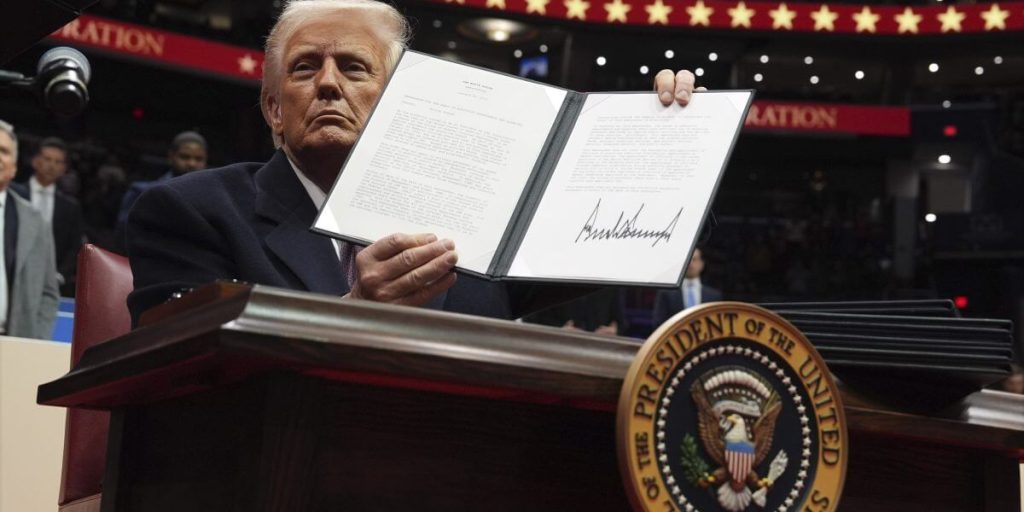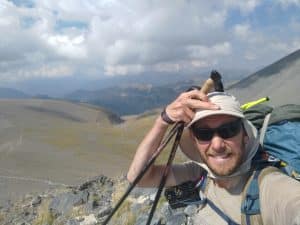Met de billen bloot
Oké, zeggen waar het op staat dus, hè Donald? Oké, ik heb het idee en krijg het gevoel dat jij probeert macht naar je toe te trekken—meer macht dan goed is voor de democratie van de westerse wereld. Ik hecht waarde aan de democratie zoals we die kennen.
Onze samenleving kent zeer veel gebreken en onrecht, maar is zoveel beter dan dictatoriale regimes of anarchie. Ik houd van de westerse democratie en de vrijheid die daarbij komt kijken. En aangezien jij leider bent van een van de grootste democratische machten op deze planeet, vind ik het geen fijn idee als jij Amerika in een oorlog, binnenlandse onrusten of een machtswellustig regime stort. Dat is niet goed voor mijn vrijheid.
Mijn angst
Mijn angst is dat jij, samen met je miljardairsvrienden, afstevent op de afbraak van de democratie. Een wereld waarin alleen het grote geld telt als de ultieme vorm van macht. Als grootste broer van ons westers zootje is mijn angst ook dat je een voorbeeld bent voor anderen om hetzelfde te (gaan) doen.
Om mijn angst te spiegelen en te zien of hij reëel is, heb ik een TrumpTracker gebouwd. Zo kan ik de stroom aan decreten een beetje in de gaten houden. Ik geef ze een rating en categoriseer ze zodat ik het overzicht houdt voor mijn OCD.
Electorale coup? Say what?
The process of a democratic leader turning into a dictator often follows recognizable patterns. This process can begin gradually and subtly, but ultimately leads to the undermining of the rule of law and the monopolization of power. Here are the main characteristics and strategies that such leaders employ:
1. Undermining the Rule of Law
A leader who dismantles democracy often begins by weakening the institutions that control power.
- Attacks on the Judiciary : The judiciary is undermined by appointing loyal judges, pressuring independent judges, and changing laws to increase control.
- Limiting parliamentary countervailing power : The opposition in parliament is marginalized, sidelined or criminalized.
- Amending the Constitution : Laws and regulations are changed to expand the leader’s power, for example by extending presidential terms or introducing emergency laws.
2. Control Over Media and Information
A leader with dictatorial tendencies will try to gain control over the flow of information.
- Censorship and media takeover : Critical media outlets are closed, taken over or pressured to spread propaganda messages.
- Creating disinformation and enemy images : By spreading lies and conspiracy theories, the population is divided and opponents are portrayed as ‘enemies of the people’.
- Restricting the Internet and Social Media : Independent voices on digital platforms are censored or blocked.
3. Criminalize and Eliminate Opponents
Opponents are eliminated in various ways.
- Use of justice against political opponents : Opposition leaders are charged, arrested or forced to leave the country.
- Intimidation and violence : Critical journalists, activists and intellectuals are threatened or physically attacked.
- Ban on political parties or electoral fraud : Democratic processes are sabotaged by election manipulation, changes to electoral laws or the removal of opponents from the ballots.
4. Militarization and Control of Security Services
The leader uses the security services to consolidate power.
- Political use of police and military : Security forces are used to suppress protests or intimidate opponents.
- Creation of loyalist militias : Paramilitary groups or secret services are used to eliminate opponents outside official channels.
- Expansion of surveillance and control : Citizens are being spied on, social media is being monitored and mass surveillance is being expanded.
5. Manipulation of the People and Nationalism
Dictatorial leaders often use populist and nationalist rhetoric.
- Creating an external enemy : Foreign powers or minority groups are portrayed as threats to create a sense of national unity.
- Cult formation around the leader : The leader is presented as the only one who can save the country, often with a messianic tone.
- Erosion of civil rights under the guise of ‘security’ : Personal freedoms are curtailed under the pretext of counter-terrorism or national security.
6. Step-by-step Elimination of Democracy
The process rarely happens all at once, but rather in small steps:
- Polarization and attacks on the media and judiciary.
- Slowly weakening of opposition and critical voices.
- Emergency laws and legal reforms that centralize power.
- Manipulating elections and neutralizing the opposition.
- Establish total control through militarization and repression.
Conclusion
A democracy rarely becomes a dictatorship overnight; it happens gradually, with small measures that may not seem alarming in isolation. The combination of undermining the rule of law, control of information, elimination of opponents, and militarization of power is a clear pattern that recurs throughout history.


